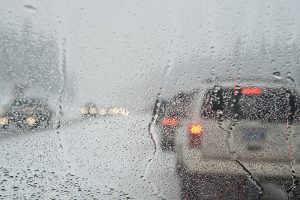Winter weather driving

We have four tips that will make your driving more fuel efficient. Be kind to the environment and spend your money on Christmas gifts rather than gasoline! Our winter fuel economy tips include:
- Follow tips from the EPA for fuel economy in cold weather
- Check tires to ensure correct pressure
- Clean air filter
- Eliminate extra weight from the vehicle
Cold weather fuel economy (or lack thereof)
The average gas mileage for typical city driving is about 12% lower at 20°F than at 77°F. Gas mileage can even drop as much as 22% on even shorter trips (3 to 4 miles). Hybrids fare even worse, with their fuel economy typically dropping 31% to 34%.
While cold weather and winter driving conditions reduce fuel efficiency, there are things you can do to mitigate this. With the extra money you have to spend on energy in winter to heat your home, it seems unfair that you also have to shell out more on energy to fuel your car. Can’t a Michigander get a break?
The answer is “yes!”
Why you get worse gas mileage in winter
Cold weather affects your vehicle, resulting in poorer fuel economy.
- The engine and transmission friction increases in cold temperatures. Overcoming friction is responsible for over one-third of fuel consumption.
- The engine takes longer to reach its most fuel-efficient temperature.
- Heated seats, defrosters, and heater fans demand energy.
- Warming up your vehicle before you start your trip means you get 0 miles per gallon before you even move!
- Cold air is denser, increasing aerodynamic drag on your vehicle. Not what you want when you’re going 70mph!
- Tire pressure decreases in the cold, which increases rolling resistance. This means more energy is needed to turn your tires the same number of rotations than is needed in warmer conditions.
- Winter gasoline can have slightly less energy per gallon than in summer.
- The cold weather makes it harder for your alternator to keep your battery charged. For hybrids, this affects the performance of the regenerative braking system as well.
- Icy or snow-covered roads decrease your traction, consuming more energy.
- Safe driving speeds on slick roads (when advisably followed) can reduce fuel economy, especially below 30 to 40 mph.
- Four-wheel / all-wheel drive increases fuel consumption.
Follow tips from the EPA for fuel economy in cold weather
The Environmental Protection Agency has winter fuel economy tips to improve your fuel efficiency in cold weather. Don’t be left out in the cold! Read them.
While you aren’t going to get gas mileage like you do in summer, there are many tricks to minimize your fuel usage. Take it from the EPA:
- Park your car in warmer places, like a garage, so it won’t take as long for the engine to reach its optimum running temperature.
- Combine trips. Then you’ll spend a smaller fraction of drive time just to increase the temperature of the engine.
- Minimize idling your car to warm it up. Most manufacturers recommend waiting only 30 seconds. Driving warms up the engine faster, allowing the heat to turn on sooner.
- Don’t use seat warmers or defrosters unnecessary. Wear extra layers instead.
- If you drive a plug-in hybrid or electric vehicle, use seat warmers instead of the cabin heater.
- For plug-in hybrid or electric vehicles, preheating the cabin while plugged into the charger can extend your vehicle’s range.
- Use the oil your vehicle’s manufacturer recommends for cold weather.
- Remove accessories that increase wind resistance, like roof racks (unless, of course, you bike in winter!)
- Regularly check tire pressure.
Check tires to ensure correct pressure
While mentioned in the EPA’s winter fuel economy tips, we’d like to underscore the importance of this advice. So, make sure to check your tire pressure and tread depth!
Check tire pressure with a simple gauge sold at any auto supply store, including Thelen Auto Group. Follow your manual’s recommendations for pressure level and fill up tires with air at a gas station if needed. Most gas stations offer tire air fill-ups for free with a gasoline purchase.
You should check your tires to ensure they have appropriate amounts of tread. Use the “Lincoln Test.” Insert a penny into your tire’s tread headfirst (Lincoln’s head that is!) If you can still see all of Lincoln’s head, replace the tires. Thanks, Old Abe!
Since Michigan is a wintry climate, you might want to install winter tires before the season hits. (If you have questions, let us know!)
Clean air filter
The advice to clean your air filter is sound advice for old cars. However, it isn’t such a concern in modern vehicles with computer chips making calculations and correcting for air flow. So, if your car is old, get your air filter changed for fuel economy. If your car is new, get your air filter changed anyway, but for the reason of increased vehicle performance.
Eliminate extra weight from the vehicle
Think of all the things in your truck bed or cargo in trunk that you’re not currently using (excluding emergency items).
Of all of the winter fuel economy tips this is the most intuitive, yet it’s often forgotten. Any extra weight is weight your car has to use power to carry around. If you don’t need it where you’re going, don’t bring it!
Stay safe!
We at Thelen Auto Group wish everyone a safe – and fuel-efficient! – winter season. Looking for a new ride or in need of winter tires? Stop in and visit us!
Have any winter fuel economy tips? Share them in the comments!
Links:
https://www.fueleconomy.gov/feg/coldweather.shtml
https://exchange.aaa.com/safety/driving-advice/winter-driving-tips/
https://money.usnews.com/money/blogs/my-money/2015/11/03/5-steps-to-prepare-your-car-for-winter
https://www.sciencedaily.com/releases/2012/01/120112095853.htm
https://www.sciencelearn.org.nz/videos/682-what-is-rolling-resistance








